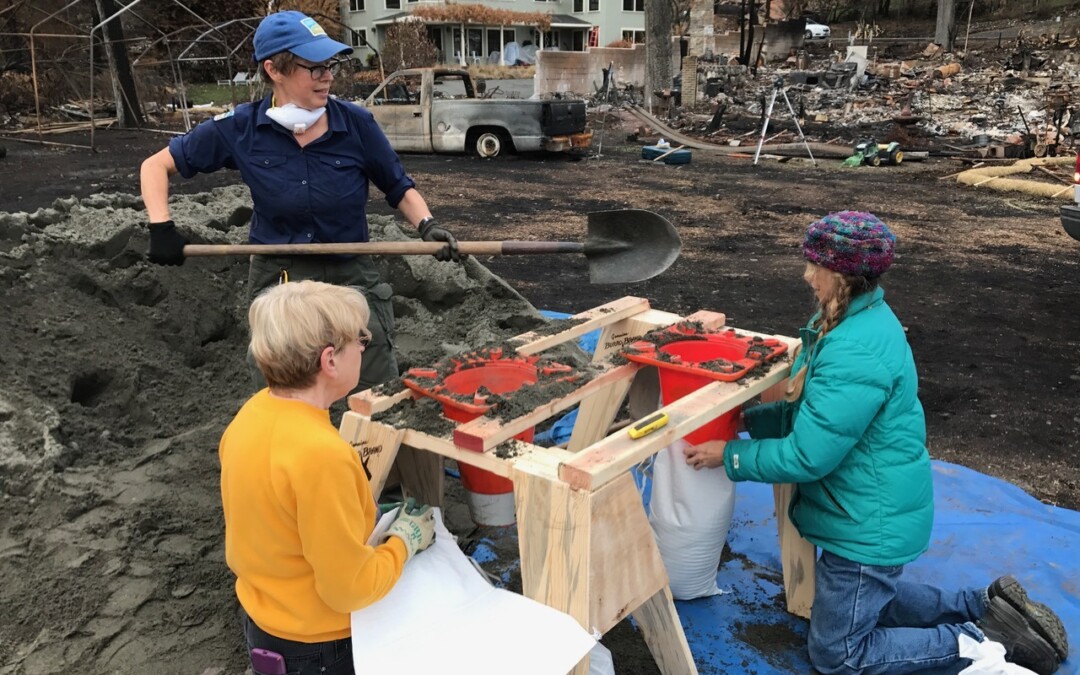Late last year, as locals were picking up the pieces following historic wildfires, we at Sonoma Ecology Center put our heads together to figure out how best to leverage our strengths – which include community outreach, mobilizing volunteers, and an unparalleled knowledge of Sonoma Valley’s watershed – to help the Valley recover.
One thing became clear to us right away: dozens of burned structures in Sonoma Valley would need to be contained, and quickly, so that upcoming rains don’t wash their pollutants into our watershed.
In answer to this problem, we developed the Emergency Watershed Protection Program, designed to keep asbestos, heavy metals and other pollutants – found in the toxic ash and debris of burned structures – from washing into Valley streams, which support steelhead, beaver, otter and other wildlife. We organized dozens of volunteers, reached out to landowners, and set to work laying sandbags and straw-filled wattles around the sites so that ash and toxins stay put.
The work is far from over – some Valley slopes still have burned structures to contain – but we’re proud to announce that the initial emergency response work is now almost complete, and has successfully contained four-fifths of our highest-priority sites, i.e. burned structures within 100 feet of creeks in Sonoma Valley. That totaled 279 structures on 135 properties, with 944 wattles laid and 1,155 sandbags filled and placed. We’ve clocked about 1,500 hours, and two-thirds of that was volunteer hours – just people in the community, some even from far away, coming to the aid of Sonoma Valley.
We can’t really thank those volunteers enough, and will never forget the hard work and enthusiasm they showed on those cold mornings, boots and gloves on and a readiness to make our Valley clean and new again.
Thanks also to the San Francisco Bay Regional Water Quality Control Board for its critical funding, and to the dozens of landowners who gave us permission to secure toxic ash on their property – and in many cases picked up a shovel and worked alongside us.
Our watershed protection work is now focusing on broader landscape protection, erosion control and restoration, as we join county authorities in addressing the possibility of flooding and mudslides – as happened this winter in burned areas of Southern California – and other post-fire challenges. Erosion is expected to remain a risk for two more years; luckily, soil erosion is a subject we know a lot about. Going forward, our program will assess high-risk areas in the Valley, identify sites that pose a direct threat to properties and the watershed, and seek funding to implement erosion control measures at those locations.
By working together, our community will continue to make Sonoma Valley a better, safer and more thriving place for future generations.

